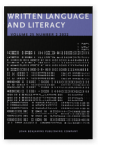Vol. 25:2 (2022) ► pp.228–252
Supporting university students’ argumentative source-based writing
Argumentative writing from sources is a literacy practice that students commonly find challenging. The present article reports a descriptive study where students’ source-based writing in small groups was supported with either print-based or digital scaffolding. Students analyzed source texts given to them and used their analysis to compose a position paper on a controversial educational topic. Position papers were analyzed for depth and breadth of argumentation, stand and justifications, degree of transformation of source texts’ argumentation, and structure. The study suggests that students in both scaffolding groups were fairly capable of identifying relevant reasons representing various perspectives on the topic in source texts and using them to build an argument in their position papers. However, students seldom transformed the arguments by adding their own thoughts or connecting arguments across the texts. Further, quite a few students seem to struggle in structuring their essays: 41% of essays in the print-based scaffolding group and 24% of essays in the digital scaffolding group were unstructured. Instructional implications are discussed.
Article outline
- 1.Introduction
- 2.Argumentative writing from sources
- 3.Purpose and quality of written argumentation
- 4.Struggles with source-based writing
- 5.Representational tools to support students’ argumentation
- 6.Aim and research questions
- 7.Method
- 7.1Subjects
- 7.2Task and source texts
- 7.3Digital and print scaffolds
- 7.4Phases of work
- 7.5Data analyses
- 7.5.1Depth and breadth of argumentation in the students’ position papers
- 7.5.2Stand and justifications in position papers
- 7.5.3Degree of transformation of the source texts’ argumentation in the students’ position papers
- 7.5.4Type of structure in position papers
- 7.5.5Reliability of the analyses
- 7.5.6Statistical analyses
- 8.Results
- 8.1Depth and breadth of argumentation in students’ position papers
- 8.2Stands and justifications in students’ position papers
- 8.3Degree of transformation of source texts’ argumentation in students’ position papers
- 8.4Structure of position papers
- 9.Discussion
- 10.Limitations and future directions
- Acknowledgements
-
References
